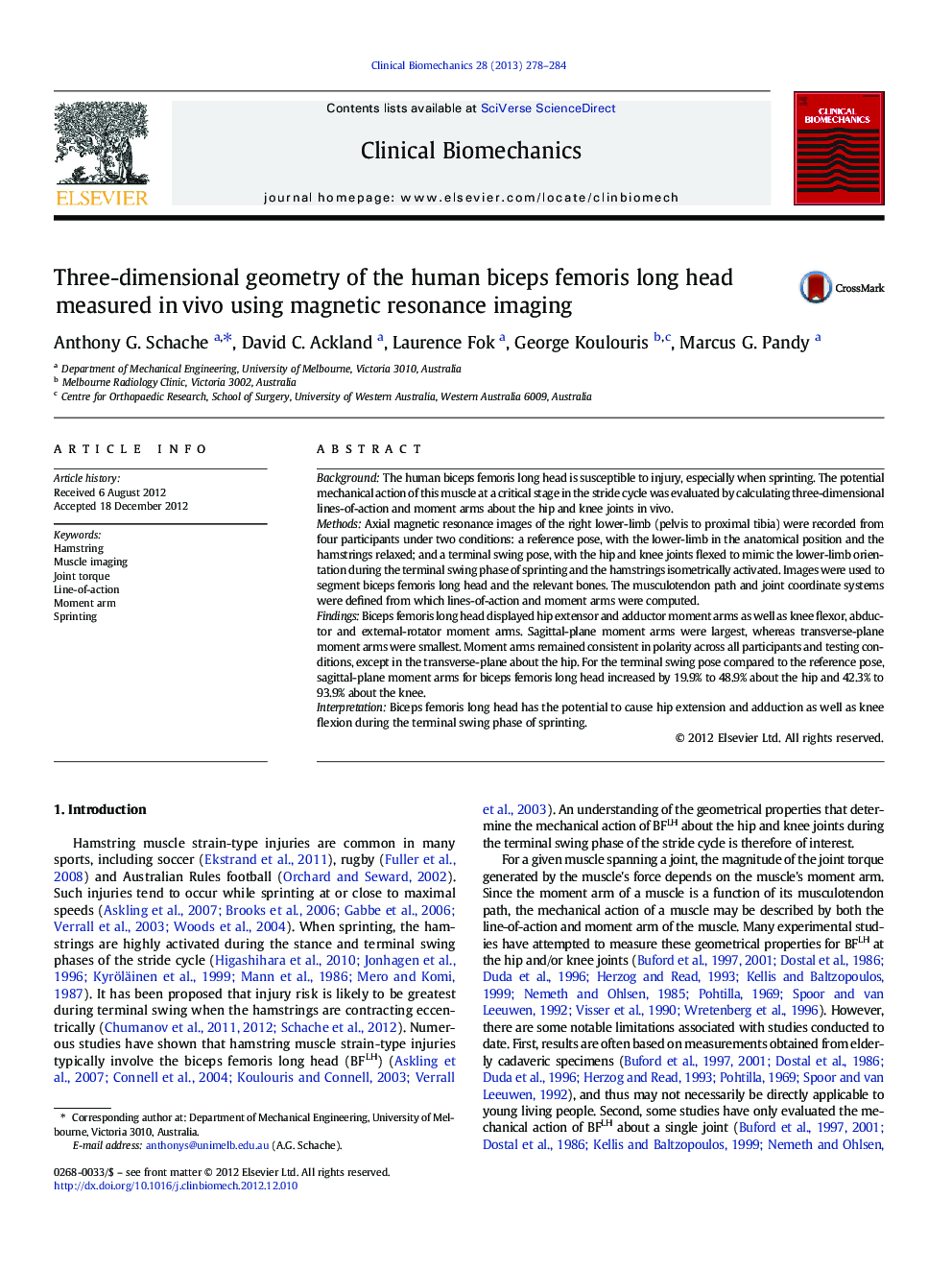| کد مقاله | کد نشریه | سال انتشار | مقاله انگلیسی | نسخه تمام متن |
|---|---|---|---|---|
| 4050493 | 1264935 | 2013 | 7 صفحه PDF | دانلود رایگان |

BackgroundThe human biceps femoris long head is susceptible to injury, especially when sprinting. The potential mechanical action of this muscle at a critical stage in the stride cycle was evaluated by calculating three-dimensional lines-of-action and moment arms about the hip and knee joints in vivo.MethodsAxial magnetic resonance images of the right lower-limb (pelvis to proximal tibia) were recorded from four participants under two conditions: a reference pose, with the lower-limb in the anatomical position and the hamstrings relaxed; and a terminal swing pose, with the hip and knee joints flexed to mimic the lower-limb orientation during the terminal swing phase of sprinting and the hamstrings isometrically activated. Images were used to segment biceps femoris long head and the relevant bones. The musculotendon path and joint coordinate systems were defined from which lines-of-action and moment arms were computed.FindingsBiceps femoris long head displayed hip extensor and adductor moment arms as well as knee flexor, abductor and external-rotator moment arms. Sagittal-plane moment arms were largest, whereas transverse-plane moment arms were smallest. Moment arms remained consistent in polarity across all participants and testing conditions, except in the transverse-plane about the hip. For the terminal swing pose compared to the reference pose, sagittal-plane moment arms for biceps femoris long head increased by 19.9% to 48.9% about the hip and 42.3% to 93.9% about the knee.InterpretationBiceps femoris long head has the potential to cause hip extension and adduction as well as knee flexion during the terminal swing phase of sprinting.
Journal: Clinical Biomechanics - Volume 28, Issue 3, March 2013, Pages 278–284